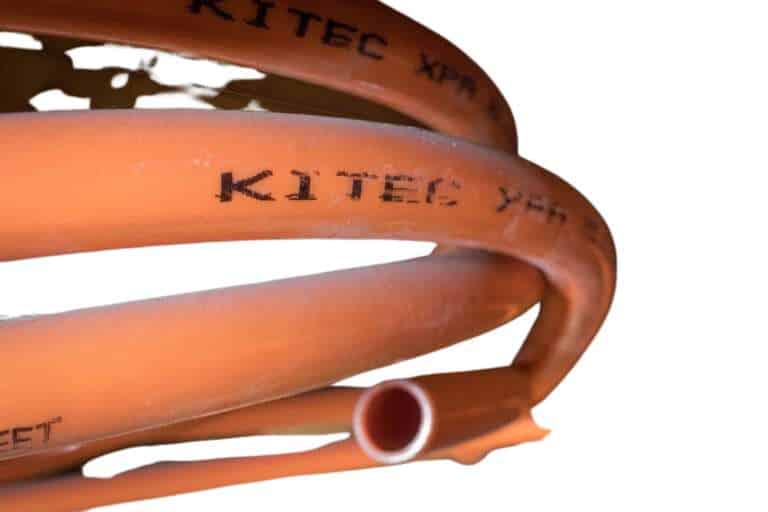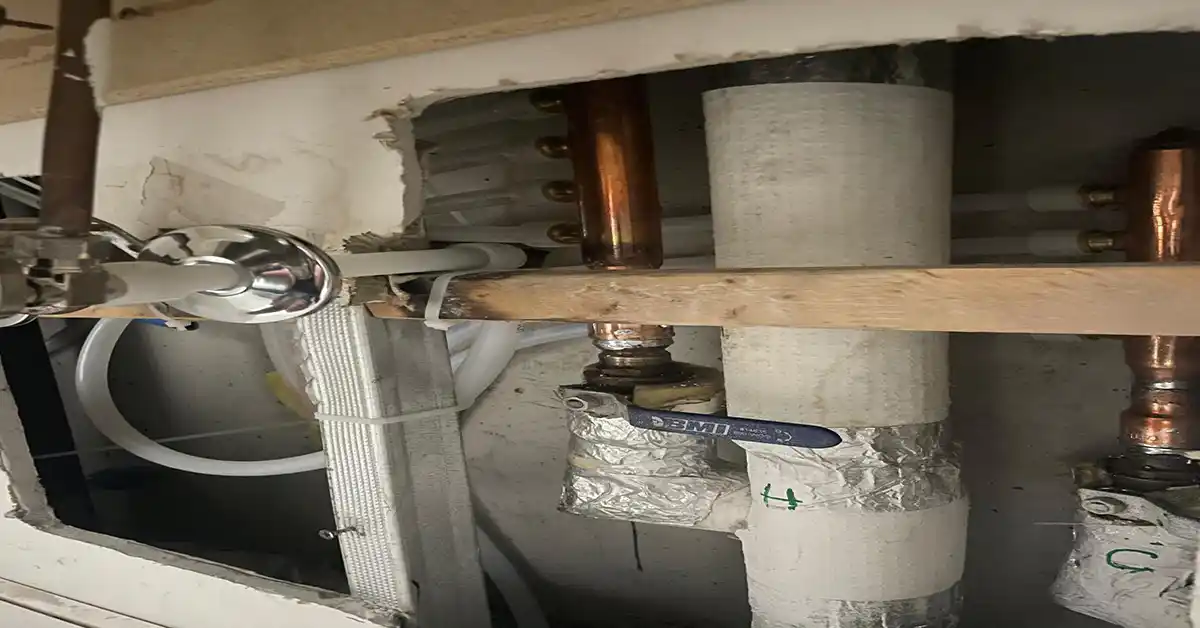Your home’s plumbing system is a crucial component that ensures the smooth flow of water throughout your living spaces. However, certain types of plumbing materials have come under scrutiny due to their potential for causing problems and costly repairs. One such example is Kitec plumbing.
Kitec plumbing, commonly used in residential properties between 1995 and 2007, was initially touted as an innovative and cost-effective solution. However, over time, homeowners and experts discovered a range of issues associated with this type of plumbing. These problems have prompted many homeowners to proactively identify and address Kitec piping within their homes to mitigate potential risks. In this article, we will explore various methods for how to identify Kitec plumbing, including visual cues, color differentiations, markings or labels, and examining fittings.
We will also discuss the common issues associated with Kitec piping, such as corrosion, leaks, reduced water flow, and potential health concerns, helping you understand why addressing this plumbing material is crucial.
History of Kitec Plumbing

Kitec plumbing was a type of plumbing system introduced in 1994 by IPEX Inc. It was marketed as a cost-effective and easier-to-install option for copper pipes. Kitec plumbing was made of a composite material that included aluminum, plastic, and resin adhesives. The aluminum pipe was designed to be flexible and corrosion-resistant, while the plastic layers were designed to provide insulation and strength.
What are the other names for kitec pipes?
Kitec pipes were also known by a few other names and variations. These names might have been used by manufacturers or suppliers to market or differentiate their Kitec pipe products. Regardless of the name, the underlying concern with Kitec pipes lies in the faulty brass fittings used in their construction, which can lead to deterioration and potential plumbing issues. Some alternative names for Kitec pipes include:
- Kitec plumbing system
- Kitec composite pipe
- Kitec PEX-AL-PEX
- Kitec AL-PEX
- Kitec XPA
- Kitec AQUA
- PlumbBetter
- WarmRite
- XPA Pipe
- AQUA Pipe
See Also: What Is Kitec Plumbing and How Does It Work
How To Identify Kitec Plumbing?

1. Orange and blue pipes
How to identify kitec plumbing through its recognizable characteristics, characterized by the presence of unique orange (for hot water) and blue (for cold water) pipes. These pipes are constructed using a composite material, consisting of plastic layers enveloping an intermediary aluminum layer.
2. Brass fittings with Kitec branding
Kitec plumbing systems often have brass fittings with the “Kitec” brand name stamped on them. These fittings may be visible at connection points, such as under sinks, behind shower valves, or near water heaters.
3. Date stamp on the pipes
Kitec plumbing pipes may have a date stamp imprinted on them. The date stamp is usually a four-digit number that indicates the manufacturing date. Kitec plumbing was commonly installed between 1995 and 2007, so if you find pipes with a date within that range, it’s a potential indicator.
4. System documentation
Kitec plumbing installations may have documentation or labels indicating the use of Kitec pipes and fittings. Look for any paperwork, receipts, or installation manuals that mention Kitec or the manufacturer, IPEX.
5. Consult a professional
If you’re unsure whether you have Kitec plumbing or if you want a definitive confirmation, it’s best to consult a professional plumber or a home inspector experienced in identifying Kitec systems. They can visually inspect your plumbing and provide accurate information.
How Do You Know When Your Kitec Pipes Are Close to Deterioration?

If your building was constructed between 1995 and 2007, there is a higher likelihood that Kitec pipes were used. Knowing the installation period can help you determine if your plumbing system may be affected. Look for “Kitec” or “KTC” stamped on the pipes, typically found near the fittings. These markings can indicate the presence of Kitec plumbing. Inspect the exposed Kitec pipes for any signs of discoloration, including red or orange stains. This could be an indication of the pipe material deteriorating. Keep an eye out for any pinhole leaks in the pipes or signs of water damage, such as water stains, mold growth, or a musty smell. These can be indications that the pipes are deteriorating and leaking.
If you’ve noticed a significant decrease in water pressure throughout your plumbing system, it could be due to the narrowing of pipes caused by deterioration or mineral buildup. Examine the brass fittings connecting the pipes. Look for signs of corrosion, such as greenish or bluish discoloration or any swelling or distortion of the fittings. These can be signs of deterioration. If you’re uncertain about the condition of your plumbing system, it’s best to consult our licensed plumber or a plumbing inspection service. They can conduct a thorough evaluation of your pipes and provide expert advice.
How do I know if I have Kitec piping?

To determine if you have Kitec piping in your home or how to identify Kitec plumbing, you can follow these steps:
Look for the Kitec logo or labeling:
Kitec piping typically has “Kitec” or “KT” printed on it. Check the visible pipes in your home, particularly in the basement, utility areas, or near the water heater.
Check the color of the pipes:
Kitec conduits typically exhibit an orange shade for hot water lines, while cold water lines are often distinguished by a distinct blue coloration. However, keep in mind that the colors can fade over time, so it’s not a foolproof method.
Consult the home inspection report:
If you recently purchased your home, review the home inspection report. The inspector may have noted the presence of Kitec plumbing if it was identified during the inspection.
Contact the installer or builder:
If you have access to the construction or renovation records of your home, try to determine if Kitec plumbing was used. Check with the installer or builder.
Hire a professional plumber:
In case lingering uncertainties persist, it is prudent to contemplate engaging a professional plumber possessing the expertise to meticulously examine your plumbing system. They can identify the type of piping used in your home and determine if it includes Kitec pipes.
Note any plumbing issues:
Kitec pipes are known to have issues with corrosion and premature failure. If you experience frequent leaks, reduced water pressure, or other plumbing problems, it could be an indication of Kitec piping.
How can you tell the difference between Kitec and PEX?
Distinguishing between Kitec and PEX (cross-linked polyethylene) piping can be challenging as both types of pipes are made of plastic and can have similar appearances. Nonetheless, a handful of discernible visual indicators exist that can aid you in distinguishing between the two distinct entities:
Color
Kitec piping is typically orange for hot water lines and blue for cold water lines. On the other hand, PEX piping commonly comes in red or blue for hot and cold water lines, respectively. However, it’s important to note that pipe colors can vary, and fading over time can make it harder to rely solely on color for identification.
Markings or labeling
Look for any visible markings or labeling on the pipes. Kitec pipes often have “Kitec” or “KT” printed on them. PEX pipes may have the manufacturer’s name or PEX-specific labeling printed on them.
Visual inspection
Carefully examine the pipes. Kitec pipes typically have an aluminum layer sandwiched between layers of plastic. If you can see a layer of aluminum through a clear section of the pipe, it may indicate Kitec piping. In contrast, PEX pipes are solid plastic throughout.
Fittings
Pay attention to the fittings used. Kitec fittings often have a distinct brass or bronze appearance due to the presence of brass components. PEX fittings, on the other hand, are typically made of plastic or metal that matches the color of the pipe.
See Also: How Much Does It Cost To Replace Kitec Plumbing in Toronto
Why You Need to Find Out Immediately If a Property Has Kitec Plumbing?

Potential plumbing issues:
Kitec Plumbing has a history of premature failure and leaks. The pipes can deteriorate due to a chemical reaction between the pipes and the water, leading to cracks, pinholes, and eventual loss. The consequential water damage resulting from these insidious leaks can inflict substantial harm upon your property, giving rise to exorbitant repair costs and the potential proliferation of mold.
Insurance coverage:
Some insurance companies have become aware of the issues associated with Kitec plumbing and may refuse coverage or charge higher premiums for properties with this type of plumbing. Knowing if your property has Kitec plumbing can help you understand if you need to take specific measures to maintain your insurance coverage or explore alternative options.
Resale value:
If you plan to sell the property in the future, having Kitec plumbing can potentially affect its resale value. Prospective buyers may be wary of purchasing a property with known plumbing issues or may request costly repairs or replacements before closing the deal. By acknowledging the existence of Kitec plumbing within your premises, you empower yourself to adopt a proactive approach in promptly rectifying the situation and making well-informed choices regarding the necessary repairs or replacements.
Peace of mind:
How to identify Kitec plumbing in your property provides peace of mind. By comprehending the imminent hazards linked to this intricate plumbing infrastructure, you can proactively engage in the necessary measures to avert occurrences of leaks, water-related deterioration, and any concomitant complications. It allows you to be proactive in maintaining the plumbing system or considering replacement options if necessary.
What To Do Right Now?
In conclusion, By following the guidelines provided, which include visually inspecting the pipes, checking for specific fittings and valves, examining the hot water tank, and consulting professionals if needed, you can determine whether your property has Kitec plumbing. Knowing the presence of Kitec plumbing allows you to address potential issues promptly.
This type of plumbing is associated with premature failure and leaks, which can lead to costly water damage and repairs. If you suspect or confirm the presence of Kitec plumbing, it is recommended to consult a licensed plumber or a professional experienced with Kitec plumbing to obtain expert guidance and assistance. Taking the necessary steps to address Kitec plumbing ensures the safety, functionality, and value of your home’s plumbing system.
